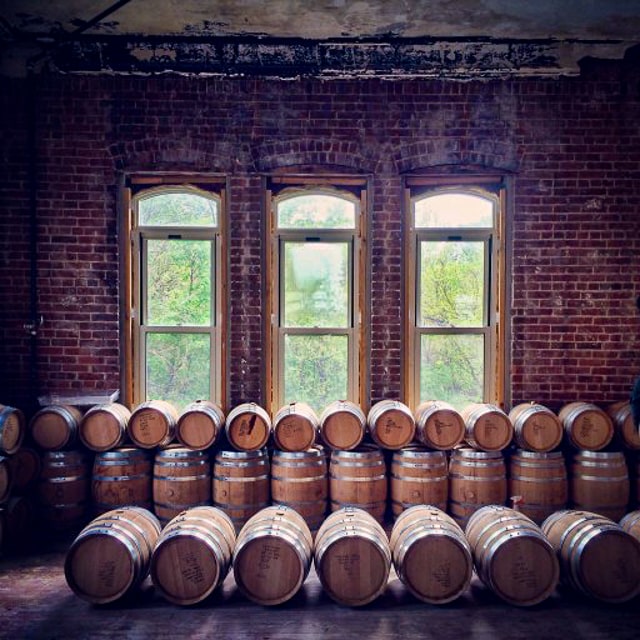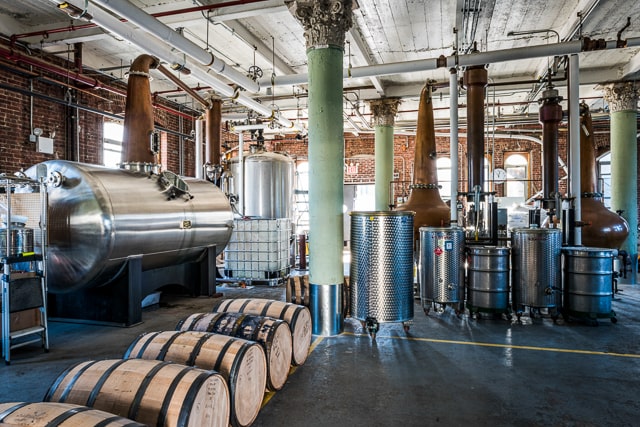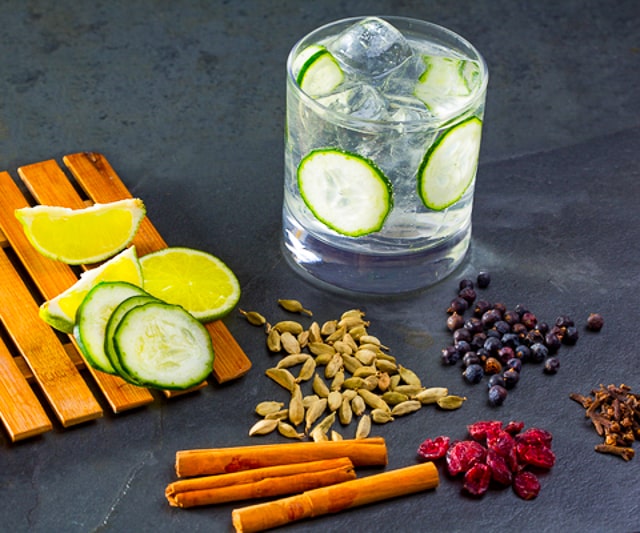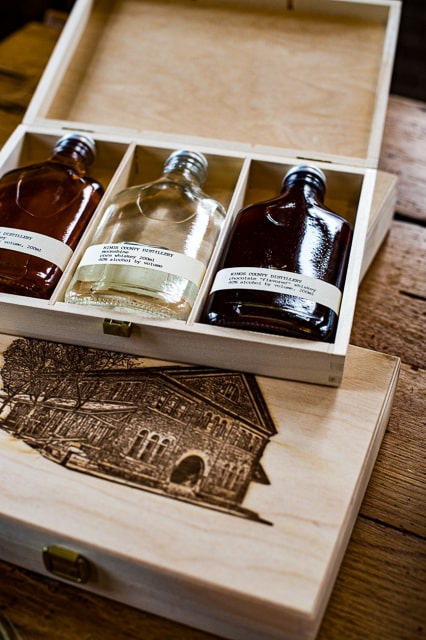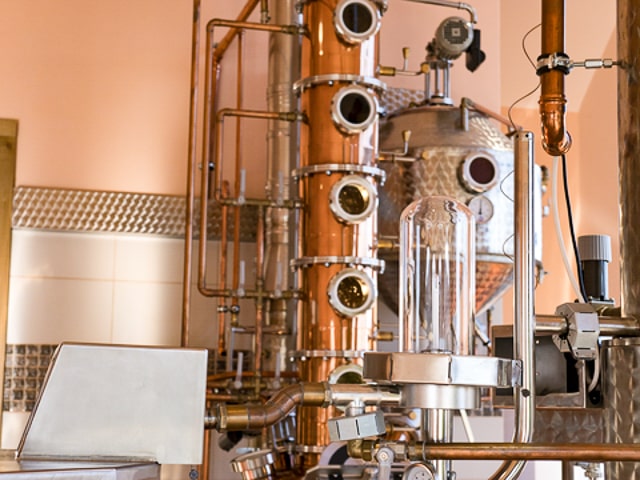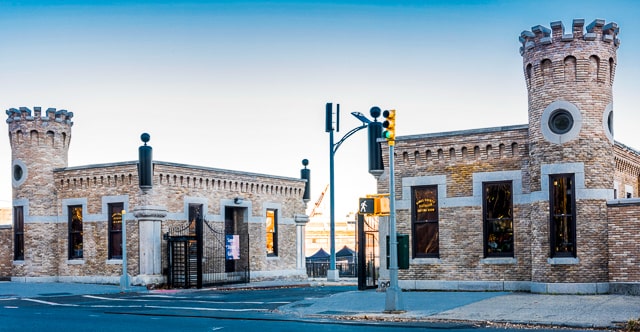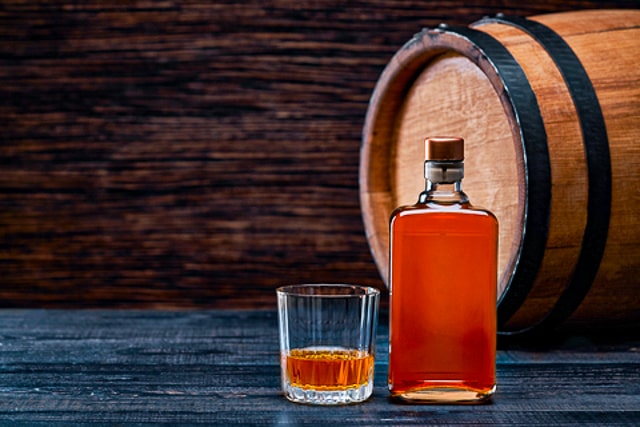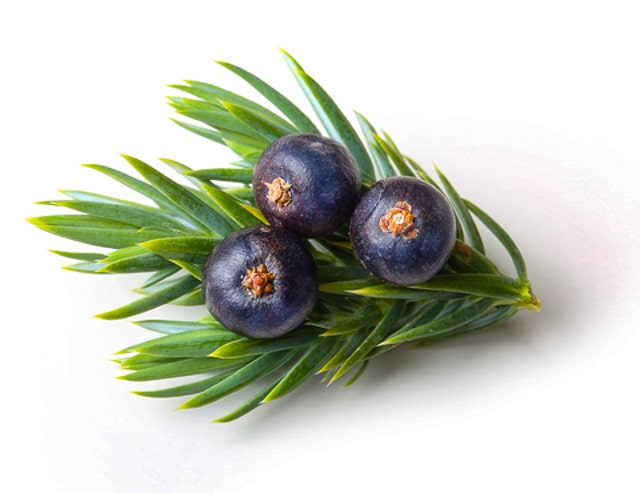Brooklyn distilleries faded from the landscape into the pages of history. All was not lost, though,
and in 2009, New York State began issuing farm distillery licenses welcoming a new generation of distilling back to Brooklyn.
The art of craft distilling is alive and well again in Brooklyn. Once abandoned warehouses are now homes to bubbling stills. Today’s distillers combine natural herbal flavors and New York grains to make spirits that awake the senses and complement any taste. For the first time in almost one hundred years, at least fifteen distilleries are dotting the Brooklyn landscape, brewing various liquors.
1- Kings County Distilling Company
Today you can visit the oldest and largest whiskey distillery only a few steps from where the famous Irish Whiskey Wars took place. Located in the former Paymaster Building in the Brooklyn Navy Yard is Kings County Distilling Company. Proprietors Colin Spoelman and David Haskell began brewing whiskey in 2009 and expanded to the current facility in 2012.
Their distilling process begins with grain or corn grown in upstate New York. Once fermented, the liquor boils in copper stills imported from Scotland. Finally, the liquor is aged and stored in oak barrels. A variety of offerings, including Chocolate Whiskey, Peated Bourbon, and Honey Moonshine, can be purchased at the distillery or online. Virtual tastings are available and include a choice of packages featuring several different whiskeys, a journal, and a primer detailing information about the distillery. The Gatehouses, a tasting room located just inside the Navy Yard’s entry gates, offers whiskey and cocktails.
2- Greenhook Gins
Travel several miles to neighboring Greenpoint, Brooklyn, and you come to Greenhook Gins. Steven and Philip D’Angelo founded this distillery in 2010. The main ingredient in gin is juniper berries. Gin created here combines juniper with rich botanicals, such as elderflower, chamomile, cinnamon, orris root, elderberry, and citrus. Distilled at lower temperatures and using a vacuum process to remove air pressure allows the gin to retain its unique aromatic flavors. Besides their American Dry Gin, they produce an Old Tom Gin and Beach Plum Gin. The latter is made by soaking whole plums for seven months in American Dry Gin and adding a touch of Turbinado sugar. These gins will certainly add zest to any cocktail. Greenhook Gins are distributed to local liquor stores and shipped throughout the United States.
3- St. Agrestis
Next door to Greenhook Gins is St. Agrestis. Following in the traditions of Italian aperitifs and digestifs, Louie and Matt Catizone, along with Steven D’Angelo (Greenhook Gins), have created refreshing, ready-to-drink cocktails. Agrestis is a fictional goddess of the earth. Botanicals such as gentian root, citrus, allspice, and spearmint combine to create a refreshing drink. Products packaged in bold colored, 1970s motif with geometric patterns are eye-catching. St. Agrestis products ship locally and to many states. A tasting room serves cocktails, such as Amaro, Negroni, or the Inferno, combining gin and house-made vermouth.
4- The Noble Experiment
The Noble Experiment, a rum-making distillery, opened in East Williamsburg, Brooklyn, in 2012. A one-woman operation headed by Bridget Firtle, a native New Yorker, started the first rum distillery in a century.
Owney’s Rum is named for a famous rum runner and bootlegger, Owen “Owney” Madden. It is a combination of sugar cane, NYC tap water, and yeast. This flavorful combination will add sweetness to any cocktail and please any palate. The Noble Experiment is open several days each week for visitors to stop by and enjoy a cocktail. Owney’s Rum is sold at local liquor stores and distributed throughout the United States.
5-New York Distilling Company
Another distillery located in Williamsburg, Brooklyn, is the New York Distilling Company. Along with Tom Patton (Brooklyn Brewery), Allen Katz began operations on December 5, 2011-the anniversary of the repeal of Prohibition.
Ragtime Rye, the premier spirit, is produced with rye grown on a family-run farm in the Finger Lakes region of New York. The Brooklyn distillery produces whiskey, and a tall still called “Bernadette” creates gin. The liquor created here is a nod to famous people of the past. Dorothy Parker, an American poet, and writer has a citrus-flavored gin in her honor.
Chief Gowanus, a local Canarsie Indians leader, was created following an early American recipe for “Holland Gin” with Ragtime Rye as an ingredient. Perry’s Tot is an aromatic and smooth gin saluting Matthew Calbraith Perry, Commandant of the Brooklyn Navy Yard.
A “tot” is a British measurement for alcohol. Perry’s Tot has the distinction of being 114 proof-57% alcohol by volume. The importance is that even if the spirit soaks gunpowder, the powder can still fire. Craft distilleries are permitted on-site bars if ingredients used are grown in New York State. The Shanty serves a wide range of gin and whiskey cocktails.
Spirits rise
Since the country’s founding, the making and distilling of spirits have been part of the Brooklyn landscape. According to records, Brooklyn’s first distillery opened in 1767 on Atlantic Avenue. The first Dutch settlers in the area were distilling sugar cane for rum production on neighboring Staten Island in 1640. At one time, almost every town in New York had a distillery. As Brooklyn grew as a city and immigrants arrived, so did the need to increase liquor production.
Spirits fall
A series of events set the stage for the distilling industry’s demise. The taxation of liquor opposed by farmers and settlers led to the Whiskey Rebellion (1791-1794). After the Civil War, newly arrived immigrants also fought the taxation of spirits leading to the making of illegal moonshine. The Irish Whiskey Wars (1869-1871) took place in Irishtown, located near the Brooklyn Navy Yard.
By 1920, national concerns about organized crime, tax evasion, and illegal liquor distribution were making headlines. To counteract these problems, the government instituted the National Alcohol Prohibition, aka The Noble Experiment, banning the sale of alcohol. Essentially, this would prove to be the final blow to the distilling industry in Brooklyn. By the end of Prohibition in 1933, almost all distilleries were out of business.
The distilleries faded from the landscape into the pages of history. All was not lost, though, and in 2009, New York State began issuing farm distillery licenses welcoming a new generation of distilling back to Brooklyn.

About Marianne M. Casey—Marianne is a native New Yorker, a lover of Brooklyn and its history. A retired educator, freelance travel writer, and photographer, she enjoys all types of travel and exploring new places. Marianne is looking forward to visiting Europe in the future, along with her favorite island destinations of Bermuda and Aruba. Marianne is a member of ITWPA and Travel Writers Café. Follow her on Facebook and Instagram.

